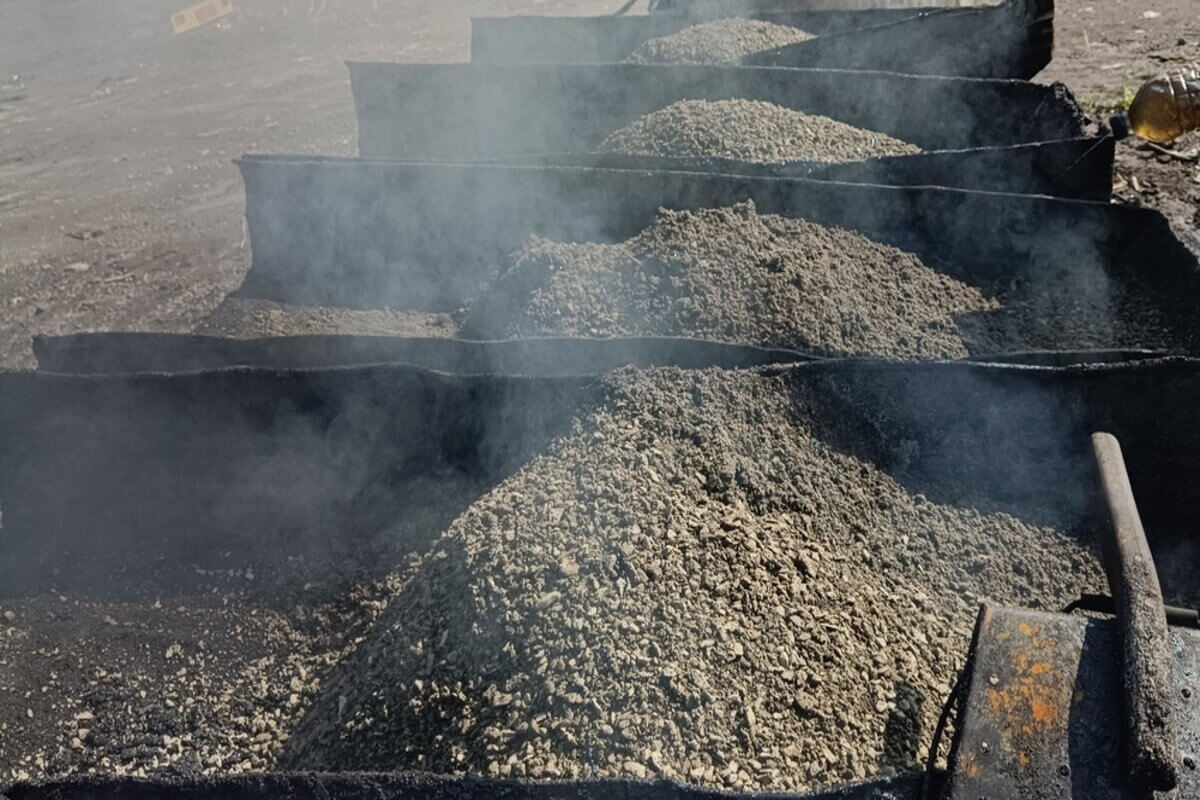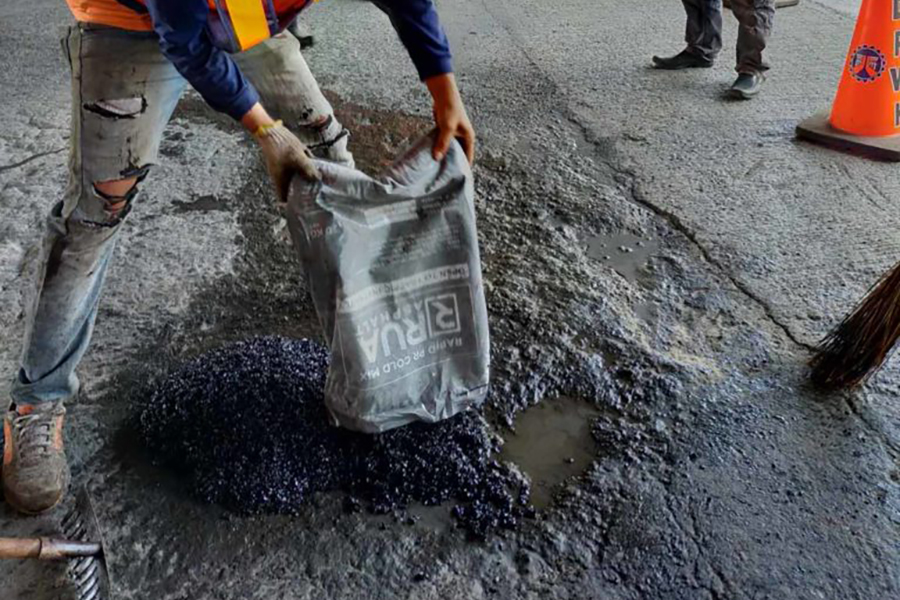Boost the Look of Your Building with Specialist Commercial Parking Whole Lot Paving
Boost the Look of Your Building with Specialist Commercial Parking Whole Lot Paving
Blog Article
Unlocking the Tricks of Warm Mix Asphalt Modern Technology
Exploring the depths of hot mix asphalt innovation reveals a globe where careful procedures and specific solutions converge to shape our roads and infrastructure. The fusion of aggregates, fillers, and binders isn't simply a construction job but a tactical orchestration of sturdiness and effectiveness. As we peer right into the complex dancing of elements, a tapestry of durability and sustainability unfolds. What exists underneath this surface of asphaltic mastery, and what keys wait to be introduced in the world of paving innovations?
Value of Hot Mix Asphalt
Warm Mix Asphalt plays a critical function in modern framework advancement due to its longevity and cost-effectiveness. As one of the most commonly made use of paving product for roads, freeways, and car park, Hot Mix Asphalt supplies a variety of benefits that add to its significance in construction tasks. One crucial advantage is its capability to endure heavy website traffic tons and harsh climate condition, supplying a reliable and durable surface for transportation networks. In Addition, Hot Mix Asphalt is economical in both first building and lasting maintenance, making it a favored selection for many facilities tasks.
The toughness of Hot Mix Asphalt stems from its composition, which consists of accumulations, binder, and filler materials that are meticulously picked and mixed to meet certain performance needs. Generally, the significance of Hot Mix Asphalt in framework development can not be underrated, as it proceeds to be a cornerstone of modern-day building techniques.
Parts of Asphalt Mixes
The composition of asphalt blends includes carefully chosen aggregates, binder, and filler products that are important for attaining certain efficiency demands. Accumulations are the main part of asphalt mixes, giving strength and security. These aggregates can be natural, such as crushed rock or crushed rock, or artificial, like recycled materials from old sidewalks. The binder, generally asphalt or asphalt cement, holds the accumulations together and offers adaptability and toughness to the mix. The selection of the binder is important as it straight influences the mix's efficiency in different climate condition. Fillers, such as moisturized lime or Portland cement, are made use of to improve the mix's workability and aging resistance. Angled Parking.
The combination and proportion of these elements play a substantial role in identifying the high quality and efficiency of the asphalt mix. Designers meticulously design the mix to fulfill specific demands, thinking about variables like website traffic quantity, climate conditions, and pavement life expectancy. Appropriate option and harmonizing of accumulations, binder, and fillers are vital for developing sturdy, long-lasting asphalt pavements.
Mixing and Production Techniques

As soon as the aggregates are selected, the binder, commonly asphalt concrete, is added to bind the products with each other. The binder's quality and amount considerably influence the mix's resistance, stamina, and versatility to environmental elements. Additionally, fillers like hydrated lime or Portland concrete may be integrated to improve particular attributes of the asphalt mix, such as its workability or wetness resistance.
During production, the accumulations and binder are warmed, commonly in between 250-325 ° F(121-163 ° C ), to promote blending click here for info and guarantee proper coating of the accumulations. The blending process must be comprehensive to achieve an uniform blend that promotes the desired efficiency attributes of the asphalt. Different techniques, such as set blending or drum mixing, are used to attain high-quality and regular asphalt blends for building projects.
Aspects Impacting Asphalt Efficiency
Factors influencing asphalt efficiency encompass a variety of variables that impact the sturdiness, long life, and overall high quality of asphalt sidewalks. One key element is the top quality of products utilized in the asphalt mix.

Ecological conditions additionally influence asphalt efficiency. Temperature level variations, wetness infiltration, and web traffic loads can all influence the structural honesty of the pavement. Layout considerations, such as sidewalk thickness and drain, are important in making certain the long-lasting efficiency of the asphalt pavement. By very carefully considering these professionals, designers and variables can optimize asphalt performance and improve the life span of sidewalks.
Lasting Practices in Asphalt Innovation

Furthermore, the advancement of warm-mix asphalt (WMA) innovations has gained grip recently. WMA enables the manufacturing and positioning of asphalt mixes at lower temperature levels contrasted to standard hot-mix asphalt, leading to reduced power intake and greenhouse gas discharges. The use of permeable asphalt blends can help minimize stormwater overflow issues by allowing water to penetrate with the pavement and right into the ground, promoting all-natural water filtering and recharge processes. By applying these lasting practices, the asphalt sector can add to building an extra resilient and eco friendly framework network.
Verdict
In conclusion, hot mix asphalt innovation plays a critical role why not try here in modern facilities advancement as a result of its durability and cost-effectiveness. By thoroughly stabilizing elements, using correct blending techniques, and considering various elements, engineers can create premium asphalt mixes that stand up to rush hour tons and rough climate condition. Embracing sustainable techniques, such as utilizing warm-mix innovations and recycled materials, better enhances the environmental kindness of asphalt modern technology.
Blending and manufacturing methods in hot mix asphalt technology entail the specific combination and processing of accumulations, binder, and fillers to develop a long lasting and high-performance asphalt mix.Elements affecting asphalt efficiency include a range of variables that influence the longevity, durability, and overall top quality of asphalt sidewalks. Sustainable techniques in asphalt innovation encompass numerous efforts aimed at lowering the environmental influence of asphalt manufacturing and paving processes. By including recovered asphalt sidewalk (RAP) and recycled asphalt roof shingles (RAS) into brand-new asphalt mixes, the market can considerably lower the usage of raw products and energy, while additionally reducing land fill waste.
WMA enables for the manufacturing and placement of asphalt blends at lower temperature levels compared to standard hot-mix asphalt, resulting in reduced power consumption and greenhouse gas discharges.
Report this page